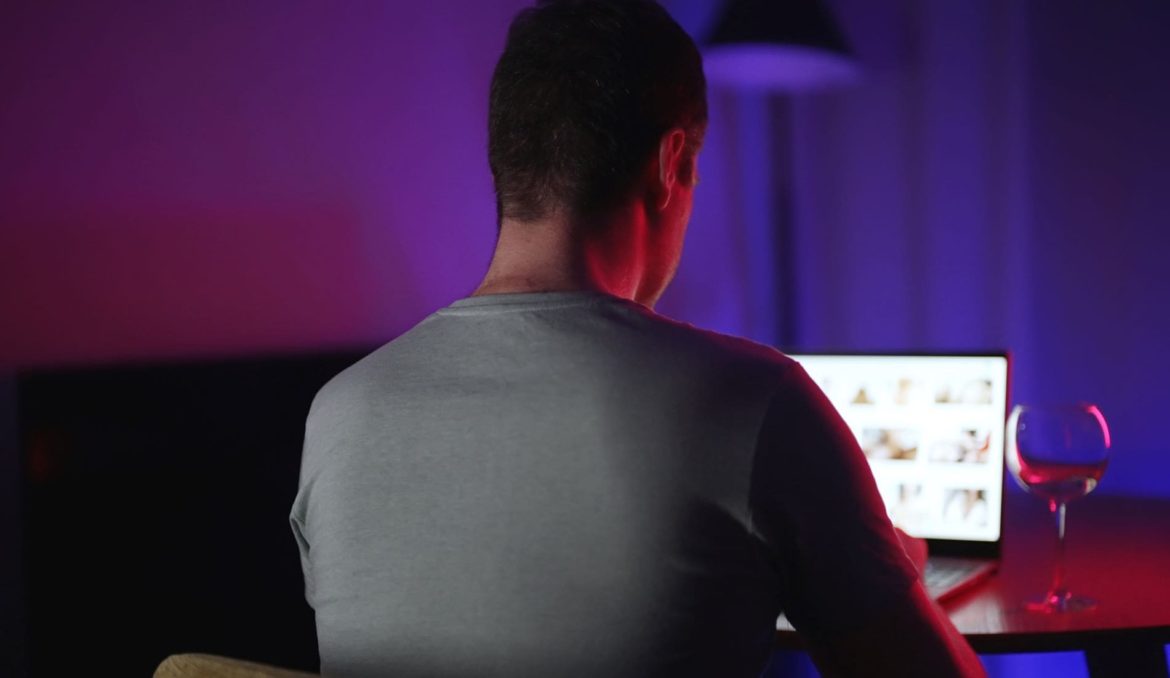You probably think of “addiction” as a term related to drug and alcohol use. However, it actually describes substance abuse and some compulsive behaviors. This includes the consumption of pornography. Watching porn can become just as addictive as using drugs or alcohol and the processes and effects of the two kinds of addiction are very much alike. The fact is, addiction to drugs and porn are so similar that they often occur at the same time. And sometimes, a person will use one behavior to replace the other.
Although addiction has typically been associated with the problem of overconsuming drugs or alcohol, the expanding scientific research in the field has changed the understanding. Now, it is apparent that various behaviors are all part of the disease of addiction. These behaviors repeatedly reinforce:
- Reward
- Motivation
- Memory circuitry of drug use
Porn Addiction and Alcohol
Porn addiction and alcohol addiction often co-occur. Typical of many other mental health conditions, porn addiction is likely to make alcohol abuse worsen and vice versa. When porn addiction and alcohol addiction are both present, they can cause disastrous relationships and personal damage.
Porn Addiction As A Co-Occurring Disorder

At times, people suffering from porn addiction will turn to alcohol or another substance to numb themselves to the shame that they may be experiencing. And at other times, a substance could be used as an enabler, making them bolder. In either case, substance use becomes part of the problem and an addiction.
Sadly, in many cases, people only look for treatment for substance addiction because that is the most apparent and present problem. But without treating the underlying addiction to pornography, the addiction that probably pushed a person into abusing substances, will likely just turn back to their substance addiction.
What Is Porn Addiction?
The theory is that porn addiction is when you can’t stop looking at porn, even if you want to. Eventually, the obsession with porn gets to the point that it interferes with:
- Relationships
- Work
- Other parts of everyday life
This is understandable when you consider the widespread availability of internet porn today. For example, in 2019 the popular internet site PornHub recorded 42 billion visits, which is $115 million per day.
Is Pornography Actually Addictive?
Scientists are debating whether heavy use of pornography is an addiction in the medical world. The World Health Organization (WHO) added compulsive sexual behavior as a mental health disorder in 2018. Although it doesn’t specifically mention pornography or any other addiction, it does refer to repetitive sexual activities becoming a main focus of a person’s life to the extent that that person ignores his or her “health and personal care or other interests, activities, and responsibilities.”
A study of men who wanted treatment for problematic pornography use (PPU) showed that their brains responded to sexual images. This gives confidence to experts who say that the same brain activity seen in drug or alcohol addiction is also seen in those who continuously use pornography.
Signs of Addiction to Porn
The definitions of how much porn is too much differ, but most experts agree that if porn gets in the way of your everyday activities, you may be watching it too much. For example, if:
- Pornography becomes a central part of your life and you quit doing things that your used to really enjoy so you can see more of it.
- You neglect your personal care.
- You lose interest in other activities
- You lose interest in social encounters
- It harms your relationships.
- You dismiss other responsibilities
- It affects your schoolwork or job.
- You’re looking at it in inappropriate places like school or work.
- Your sex life becomes unfulfilling.
- You have a craving for more.
- You aren’t able to stop looking at porn even when you try.
- You can’t quit even when you stop enjoying it as much.
- You have been heavily looking at porn for 6 months or more.
Understanding Substance Use Disorder (SUD) and Behavior Addiction

Nonsubstance-related addictive behavior has recently been recognized to be a mental health issue. Common nonsubstance-related addictions include:
- Gambling
- Internet
- Gaming
- Pornography, etc.
The idea is, that when habits become obligations, they set the development of addiction.
Addiction Stages for Drugs and Porn
Addiction doesn’t just happen over time. There are certain stages that lead to addiction, whether porn or drugs.
- The initiation or first use–Trying something out as an experiment or out of curiosity.
- A regular pattern of use–Developing a regular pattern of use such as indulging on weekends, with friends, or when alone.
- Risky use – As the pattern of porn use increases, it becomes risky and leads to a pattern:
- affecting social or occupational functioning
- affecting relationships with family, friends, and partners
- Dependence – In this stage, a person has built a tolerance to substances or behaviors. This means that the person needs more of the behavior or substance to receive the same pleasure. In addition, by this point, a person would be so dependent that abstinence would cause withdrawal symptoms.
Very often, people give in to dysfunctional behavior just to avoid the withdrawal symptoms.
What Are the Differences Between SUD and Behavior Addiction?
- The main difference that is seen between substance addiction and behavioral addiction is the ingestion of a substance which doesn’t occur in behavior addiction. Behavior addiction mostly involves heightened emotions and feelings caused by certain activities and habits.
- Chemical or substance addiction causes more physical symptoms such as trembling and other involuntary functions such as heart rate, which aren’t usually found in behavioral addiction.
What Are the Similarities Between Drug and Porn Addiction?
- The mental health challenges involved in both addictions are very similar and progress through the same cycle of development.
- The seriousness of both conditions is equally concerning. Because there is no chemical being consumed in behavioral addiction doesn’t mean that it is less harmful.
- Recovery from both addictions has always been challenging and adequate professional help is necessary.
Drug and porn addiction have the same cycle of:
- Use
- Abuse
- Dependence
- Tolerance
- Withdrawal
Both types of addiction are a result of an unstable coping mechanism. People often resort to substance use or an addictive behavior for immediate stress relief.
- Psychotherapy and pharmacotherapy (medications) are equally important for both conditions depending on the case.
Treatment for Addiction to Porn and Drugs
You can get help if you believe that your pornography habits are causing problems in your life. The main type of treatment for compulsive sexual behavior is psychotherapy (talk therapy). It is also the most common treatment form for substance use disorder: Common addiction treatment methods include:
Therapies
- Cognitive-behavioral therapy (CBT)
CBT is a type of psychotherapy where you work with a mental health professional to help identify the ways that your dysfunctional thought patterns affect your behaviors and how to overcome them.
- Acceptance and commitment therapy (ACT)
This is a form of CBT that focuses on accepting your thoughts and urges and committing to behaviors that are more in line with your other values.
- Psychodynamic psychotherapy
This form of talk therapy focuses on becoming more aware of your unconscious thoughts and behaviors, learning about motivations, and resolving conflicts.
Pharmacotherapy (Medication)
Medications can help control the brain chemicals associated with obsessive thoughts and actions. They include:
- Antidepressants
Drugs that treat depression, anxiety, or obsessive-compulsive disorder (OCD)
- Naltrexone
Naltrexone is used to treat alcohol and opiate dependence. It works by blocking the part of your brain that gets pleasure from addictive behaviors.
- Mood stabilizers
These are used for issues like bipolar disorder and they may also reduce compulsive sexual urges.
- Anti-androgens
Anti-androgens dull the effects of male sex hormones (androgens), and reduce men’s sexual urges.
Complications of Addiction to Pornography
Not coincidentally, there are also possible complications of SUD. Not getting help for an addiction to porn can lead to problems such as:
- Shame, guilt, and low self-esteem
- Mental health problems such as anxiety, depression, and suicidal thoughts
- Partner neglect
- Damaged relationships
- Loss of focus at work
- Loss of employment from watching internet porn at work
- Debt from buying pornography
- Problems with substance abuse
The Importance of Dual Diagnosis Treatment

Combining both screening and treatment for mental health and SUDs leads to a better quality of care and outcomes for individuals living with co-occurring disorders by treating the whole person. A more complete recovery is possible with integrated care.
Both disorders need to be treated at the same time, preferably by the same treatment team. Not doing so can worsen the symptoms of each disorder and send a person into a cycle of treating one, then the other, then back to the first. For your best chance of a full recovery, your care should include:
- Specialists in SUD and mental health treatment working together.
- Psychotherapy and medication if required.
- Therapy that allows the individual to make choices. This is the most reliable approach.
- Involvement of all household members, including spouses, partners, and children regardless of whether they receive individual treatment or participate in family therapy.
Harmony Ridge Offers an Integrated Path to Recovery
Harmony Ridge Recovery Center can offer you or a loved one a comprehensive and inclusive treatment program to increase your chances of having a successful outcome. We have levels of care ranging from residential for the most severe cases to a sober living home and aftercare treatment. This assures that you receive the intensity of treatment that you need when you need it.
Additionally, we have a dual diagnosis treatment program for individuals with co-occurring disorders such as porn and drug addiction. We understand the importance of treating these conditions simultaneously and have a professional staff to facilitate your treatment effectively. This is not the time to hesitate. Contact us today and see what we can do for you.



